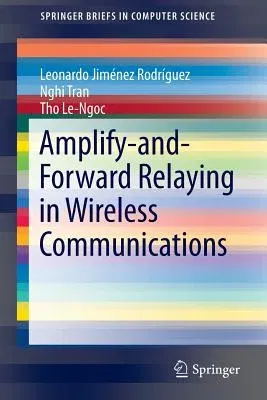Leonardo Jiménez Rodríguez
(Author)Amplify-And-Forward Relaying in Wireless Communications (2015)Paperback - 2015, 9 June 2015

Qty
1
Turbo
Ships in 2 - 3 days
In Stock
Free Delivery
Cash on Delivery
15 Days
Free Returns
Secure Checkout
Part of Series
Springerbriefs in Computer Science
Print Length
122 pages
Language
English
Publisher
Springer
Date Published
9 Jun 2015
ISBN-10
3319179802
ISBN-13
9783319179803
Description
Product Details
Book Edition:
2015
Book Format:
Paperback
Country of Origin:
NL
Date Published:
9 June 2015
Dimensions:
23.39 x
15.6 x
0.76 cm
Genre:
Science/Technology Aspects
ISBN-10:
3319179802
ISBN-13:
9783319179803
Language:
English
Location:
Cham
Pages:
122
Publisher:
Weight:
204.12 gm

